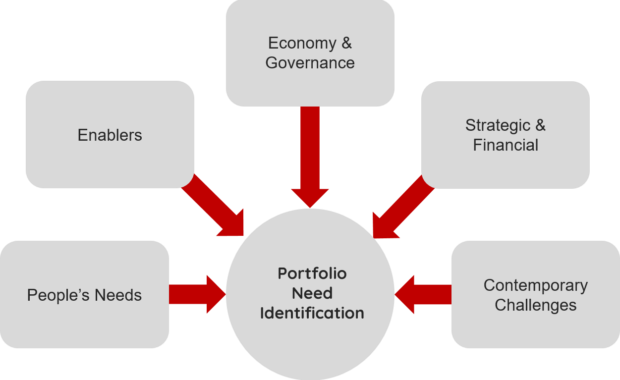
As the new Government prepares to appoint a new Cabinet, many new Ideas on structuring the cabinet has been proposed. One common theme that runs across most of these suggestions, is that they are ‘Ideas-based’.
MTI Consulting, Sri Lanka’s leading strategy consultancy (having carried out assignments in 47 countries in the last 23 years), argues that structuring a formal organisation needs to be based on first principles – via a robust and disciplined process.
Accordingly, MTI has applied such an approach to structuring the new Cabinet for Sri Lanka, specifically pointing out that there is no one right end result, what is important is the disciplined application of a robust process based on first principles.
Step 1 – Go ‘Ground Zero’
Which means, assume you have a completely ‘clean slate’, with no considerations of the historical portfolio allocations and no pre-conceived biases. This allows you to think clearly and without any limitations (at this stage).
Step 2 – Define the first principles
The following model was developed as the basis of applying the first principles, but remember this is just one way of defining the first principles. There could be other ways in which the first principles can be defined and such diversity in thinking should be encouraged. Either way, it has to be a scientific approach and the disciplined application of it.

Governments exist only to serve/meet the needs of people. Therefore, in structuring the government, it should be based on the specific needs of the people. Start with basic human needs, hierarchically exploring all types of physical, physiological, social, safety and economic needs. If the above is applied to the Government of Sri Lanka, the first-cut based on people’s need will be as follows:

Step 3: Economy and governance
Beyond the people’s needs, at a macro level the government needs to manage the economy and ensure effective governance (including the effective management of all other ministries) – this then leads to the need for other ministries.
In order to ensure and manage all portfolios identified (applying multiple criteria), what types of economic management and governance functions needs to be undertaken? Accordingly the following has been identified as the ‘first-cut’ list.

Step 4: Strategic and financial
In identifying the ministries based on the ‘People’s Needs’ and ‘Economy and Governance’, there is tendency for wide variation in the scope and scale of the ministries identified and therefore some key functions may not get adequate focus. Estimating the strategic and financial value of the portfolios (identified under each of the other modules) and then deciding which ones require further segmentation.
Step 5: Contemporary national challenges
The world we live in today confronts us with dynamic socio-economic and political challenges, which governments need to respond to and in some cases there needs to be institutions to manage/respond to these challenges.
Evaluate all the current/emerging socio-economic and political challenges that the country encounters and decide if any of these warrant a dedicated portfolio. Accordingly, for Sri Lanka the following have been identified.

Step 6: Enabling ministries
When identifying the ministries based on the criteria under Steps 2 to 5, the focus is on the front-end needs, consequently the enabling ministries (also known as back office or shared services functions) do not get captured. For each of the ministries identified thus far, examine the need for the enabler role, based on which the following has been identified.

Step 7: Rationalise ministerial needs – identified in Steps 2 to 5
Applying the 5 different criteria, we have arrived at 36 portfolios of varying scopes. While this is exhaustive, there is the possibility of overlaps and more importantly the need to rationalise and merge some of the portfolios – in the pursuit of ensuring a max of 15 cluster ministries (considered an optimal number).
Step 8: Cluster ministries – by applying the following structuring principles:
- Strategic synergies – where more than one portfolio can be merged for strategic and link reasons
- Specialisation and separation – where portfolios need to be kept very distinct – despite not justifying sufficient ‘workload’ and responsibility to match the other portfolios
- Use of contemporary terms that reflect the above and the ‘end-user’ expectations
Step 9: Sector ministries – using the same structuring principles as above.
Example of Cluster to Sector segmentation
5 sector ministries reporting to the cluster ministry

Step 10: KRAs and KPIs:
For each minister’s performance appraisal to be presented to both the parliament and the public. Then, apply the process down to the next level of government departments and SOEs.
About MTI Consulting
MTI Consulting, Sri Lanka’s leading strategy consultancy, has worked on over 650 assignments in over 47 countries, covering a diverse range of clients, brands, industries and challenges.
MTI is powered by a pool of internationally experienced strategy consultants and analysts, augmented by a panel of specialists – by industry, function and geo-domains and like-minded boutique consultancy relationships in over 30 countries.
MTI has been at the cutting-edge of thought leadership on strategy, having presented at over 150 conferences around the world.
